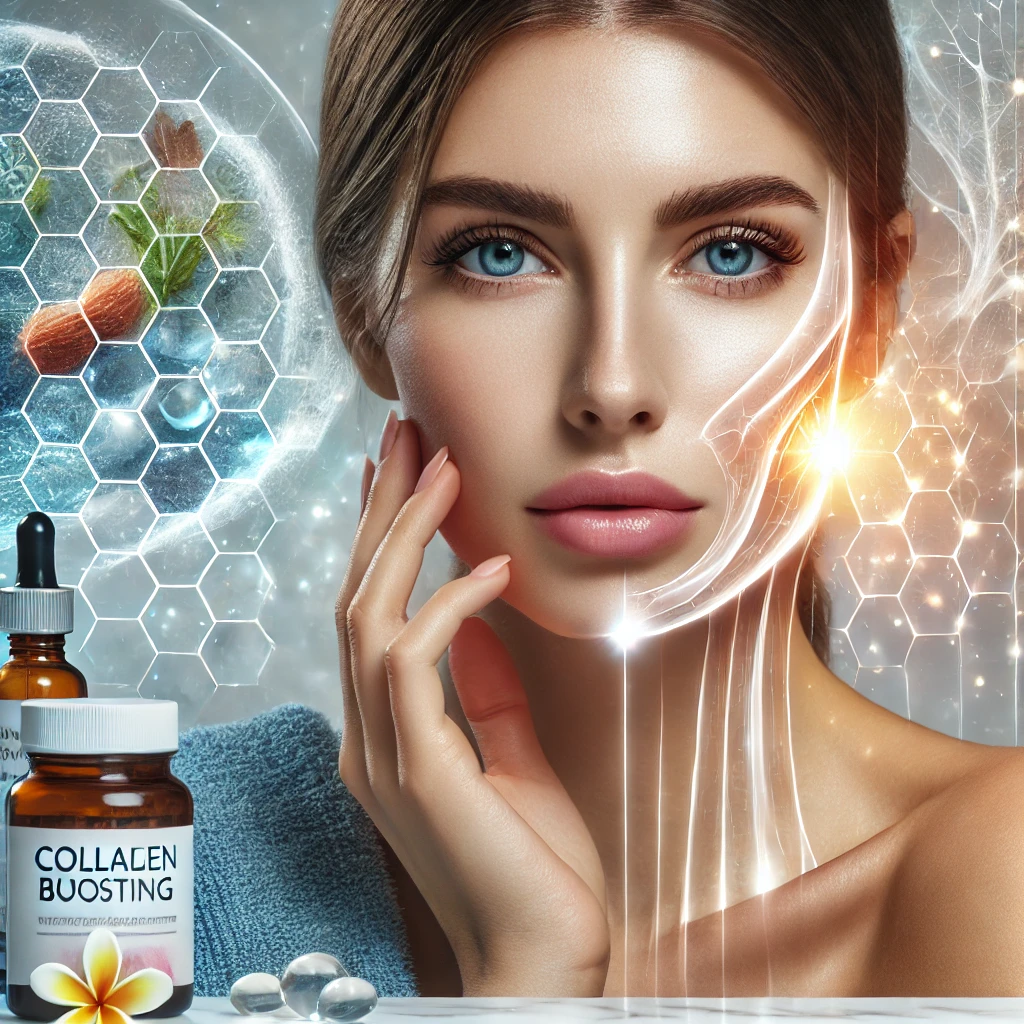Top 5 Ways to Boost Collagen Naturally for Youthful Skin and Joint Health

Introduction
Collagen is often called the “glue” that holds your body together—and for good reason. It makes up about 75% of your skin’s dry weight and is essential for strong joints, healthy tendons, firm skin, and even gut integrity. But starting in your mid-20s, your body begins to produce less collagen each year, leading to wrinkles, sagging skin, joint pain, and slower recovery.
While collagen creams and powders are everywhere, real collagen regeneration starts from within. In this article, we’ll reveal the top 5 ways to boost collagen naturally—using food, lifestyle strategies, and targeted supplements to support your body’s innate ability to rebuild and repair.
What Is Collagen and Why Does It Decline?
Collagen is a structural protein made primarily of three amino acids: glycine, proline, and hydroxyproline. Your body uses these building blocks to keep your skin firm, your joints flexible, and your connective tissues strong.
But with age—and under the influence of stress, UV exposure, poor diet, and environmental toxins—your collagen production declines. The result? Fine lines, wrinkles, thinning skin, stiff joints, and slower healing.
The good news? You can stimulate your body to produce more collagen—naturally.
Top 5 Natural Ways to Boost Collagen
1. Eat Collagen-Rich and Collagen-Boosting Foods
Food is the foundation for natural collagen production. Your body needs the right amino acids and nutrients to build and repair collagen.
Best collagen-rich foods:
- Bone broth (rich in type I and III collagen)
- Chicken skin and cartilage
- Fish skin and scales
- Egg whites
Best collagen-boosting foods (for raw materials and cofactors):
- Citrus fruits (vitamin C)
- Leafy greens (chlorophyll, vitamin C)
- Berries (antioxidants, ellagic acid)
- Garlic (sulfur, taurine)
- Pumpkin seeds (zinc)
Why it works: These foods provide the amino acids glycine and proline, and cofactors like vitamin C, zinc, and copper—all essential for collagen synthesis.
2. Take Collagen Peptide Supplements
Hydrolyzed collagen peptides are broken down into smaller amino acid chains that are easily absorbed and used by your body to rebuild collagen-rich tissues like skin, joints, and ligaments.
Benefits of collagen peptides:
- Improve skin elasticity and hydration
- Reduce the depth of wrinkles
- Strengthen hair, nails, and bones
- Support cartilage and joint function
What to look for:
- Hydrolyzed collagen types I and III (for skin)
- Type II collagen (for joints)
- Grass-fed, pasture-raised, or marine-sourced collagen
- Third-party tested for purity
Recommended dose: 5–10 grams daily, ideally on an empty stomach or with vitamin C for absorption.
3. Stimulate Collagen with Red Light Therapy (Photobiomodulation)
Red and near-infrared light therapy is a powerful, non-invasive way to stimulate your body’s own collagen production by energizing mitochondria and enhancing fibroblast activity.
How it helps:
- Increases collagen and elastin synthesis
- Improves skin tone, elasticity, and smoothness
- Reduces wrinkles and fine lines
- Supports wound healing and joint repair
Ideal wavelengths:
- Red light (610–670 nm) targets superficial skin layers
- Near-infrared light (810–850 nm) penetrates deeper tissues like joints and muscles
How to use:
- 10–15 minutes per session, 3–5x per week
- Use a high-quality red light panel or full-body bed with at least 60–100 mW/cm² of irradiance
Red light therapy is one of the few FDA-cleared methods for increasing collagen without injections or surgery.
4. Protect Collagen by Reducing Inflammation and Oxidative Stress
It’s not enough to just produce collagen—you also need to protect it. Chronic inflammation and free radical damage from UV rays, sugar, and pollution can break down existing collagen faster than your body can rebuild it.
Tips to preserve collagen:
- Avoid excess sugar and refined carbs (they trigger glycation, which stiffens collagen)
- Wear mineral sunscreen to block collagen-degrading UV rays
- Take antioxidants like vitamin C, vitamin E, and astaxanthin
- Manage stress to lower cortisol, which impairs collagen production
- Sleep 7–9 hours per night—collagen is built during deep sleep
Supplements that help:
- Vitamin C (500–1000 mg/day)
- Astaxanthin (4–12 mg/day)
- Glutathione or NAC (for detox and oxidative protection)
- Resveratrol and PQQ (support mitochondrial health)
5. Use Key Collagen-Boosting Nutrients
Certain nutrients act as “cofactors” or activators for your body’s own collagen production process. Without them, your body can’t convert amino acids into collagen effectively.
Top nutrients for collagen synthesis:
- Vitamin C – Essential for converting proline into hydroxyproline (key for collagen strength)
- Zinc – Cofactor for collagen-forming enzymes
- Copper – Helps cross-link collagen and elastin for firm skin
- Silica – Supports the scaffolding structure of skin, hair, and nails
- MSM (Methylsulfonylmethane) – Provides sulfur for keratin and collagen formation
Recommended stack:
- Vitamin C (500–1,000 mg/day)
- Zinc (15–30 mg/day)
- Copper (1–2 mg/day)
- Silica (10–20 mg/day)
- MSM (1,000–3,000 mg/day)
Taken consistently, these nutrients help restore your body’s collagen production capacity naturally and effectively.
Bonus: Consider PRF or Fractionated laser therapy for Targeted Collagen Stimulation
For those wanting localized skin rejuvenation, aesthetic treatments like:
- Fractionated laser therapy with PRF (Platelet-Rich Fibrin)
- Fractional laser therapy
- Fotona4D laser skin tightening
These therapies trigger controlled collagen regeneration through microtrauma, combined with your body’s natural growth factors. Pairing these treatments with a solid nutrition and supplement foundation amplifies your results.
Final Thoughts
Collagen loss is one of the biggest contributors to visible aging—but it’s not inevitable. With the right strategy, you can stimulate your body’s collagen production naturally, reduce breakdown, and enjoy smoother skin, stronger joints, and more resilient tissue from the inside out.
Whether you’re looking to reduce wrinkles, improve skin firmness, or support joint health, these five strategies provide a solid, sustainable foundation without relying on injections or surgery.
Want a Personalized Collagen Optimization Plan?
At Sheen Vein and Cosmetics, we combine advanced therapies like red light therapy, PRF, and regenerative nutrition to support collagen from every angle. Book a consultation today and discover how we can help you look and feel younger—naturally.